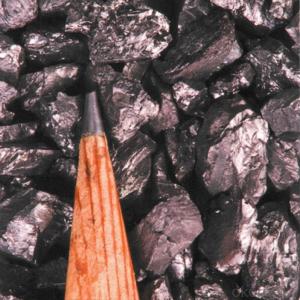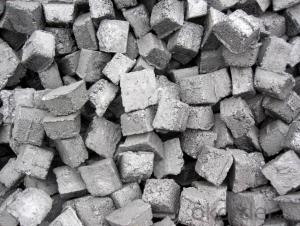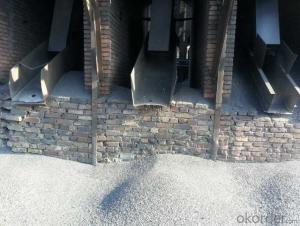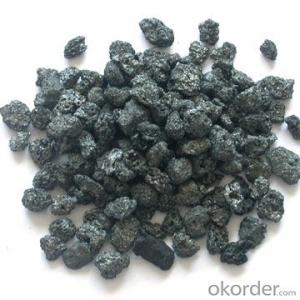Calcined Anthracite Coal Low Sulphur for Steelmaking
- Loading Port:
- Tianjin
- Payment Terms:
- TT or LC
- Min Order Qty:
- 20 m.t.
- Supply Capability:
- 10000 m.t./month
OKorder Service Pledge
OKorder Financial Service
You Might Also Like
Quick Details
Place of Origin: Ningxia, China (Mainland)
Application: steel making
Shape: granule
Dimensions: FC90-95%
Product Type: Carbon Additive
C Content (%): 90-95% MIN
Working Temperature: -
S Content (%): 0.5%MAX
N Content (%): -
H Content (%): 0.6%MAX
Ash Content (%): 8.5%MAX
Volatile: 2%MAX
ADVANTAGE: low ash & sulfur
COLOR: Black
RAW MATERIAL: TaiXi anthracite
Packaging & Delivery
| Packaging Details: | In 1MT plastic woven bag. |
|---|---|
| Delivery Detail: | 30-40DAYS |
Specifications Calcined Anthracite Coal Low Sulphur for Steelmaking Carbon Additve low Ash,S,P Structure Calcined Anthracite Coal Low Sulphur for Steelmaking Shape: granule Dimensions: FC90-95% Product Type: Carbon Additive C Content (%): 90-95% MIN Working Temperature: - S Content (%): 0.5%MAX N Content (%): - H Content (%): 0.6%MAX Ash Content (%): 8.5%MAX Volatile: 2%MAX ADVANTAGE: low ash & sulfur COLOR: Black RAW MATERIAL: TaiXi anthracite Feature Calcined Anthracite Coal Low Sulphur for Steelmaking Specifications (%): Grade F.C Ash V.M Moisture S Size CR-95 ≥95 <4 <1 <1 <0.3 0-30mm CR-94 ≥94 <4 <1 <1 <0.3 CR-93 ≥93 <6 <1 <1 <0.4 CR-92 ≥92 <7 <1 <1 <0.4 CR-91 ≥91 <8 <1 <1 <0.4 CR-90 ≥90 <8.5 <1.5 <2 <0.4 Image Calcined Anthracite Coal Low Sulphur for Steelmaking FAQ: Calcined Anthracite Coal Low Sulphur for Steelmaking Why we adopt carbon additive? Carbon Additives used as additive in steel making process. It made from well-selected Tai Xi anthracite which is low in content of ash, sulphur, phosphorus, high heat productivity, high chemically activation. Mainly industry property of it is: instead of traditional pertroleum coal of Carbon Additives, reduce the cost of steelmaking. Advantage: Calcined Anthracite Coal Low Sulphur for Steelmaking 1.High quality and competitive price. 2.Timely delivery. 3.If any item you like. Please contact us. Your sincere inquiries are typically answered within 24 hours.
FC>95% ASH<4% S<0.3%
It is made from TaiXi anthracite.
instead of pertrol coke reduce the cost
As buyer's request.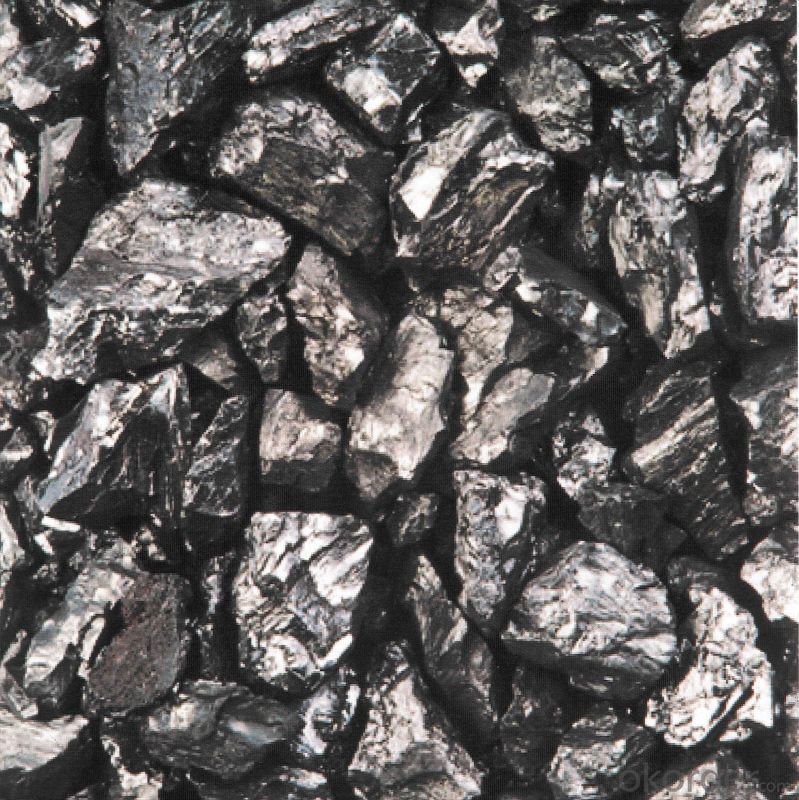
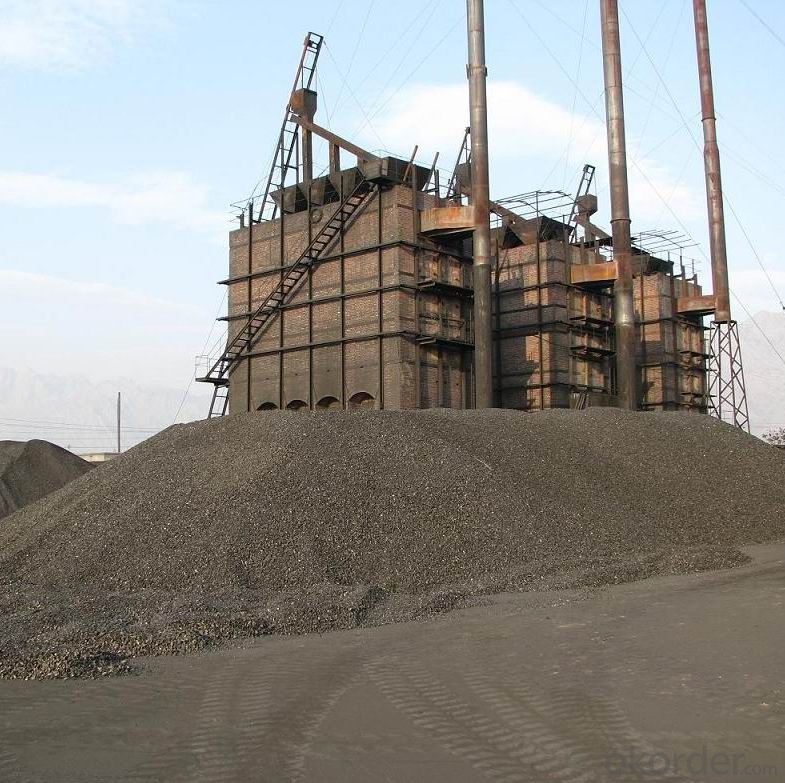
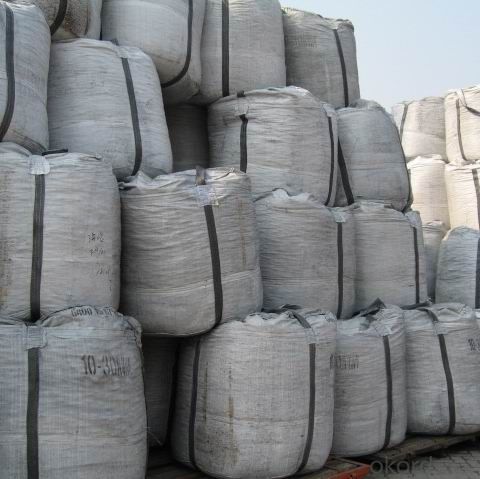

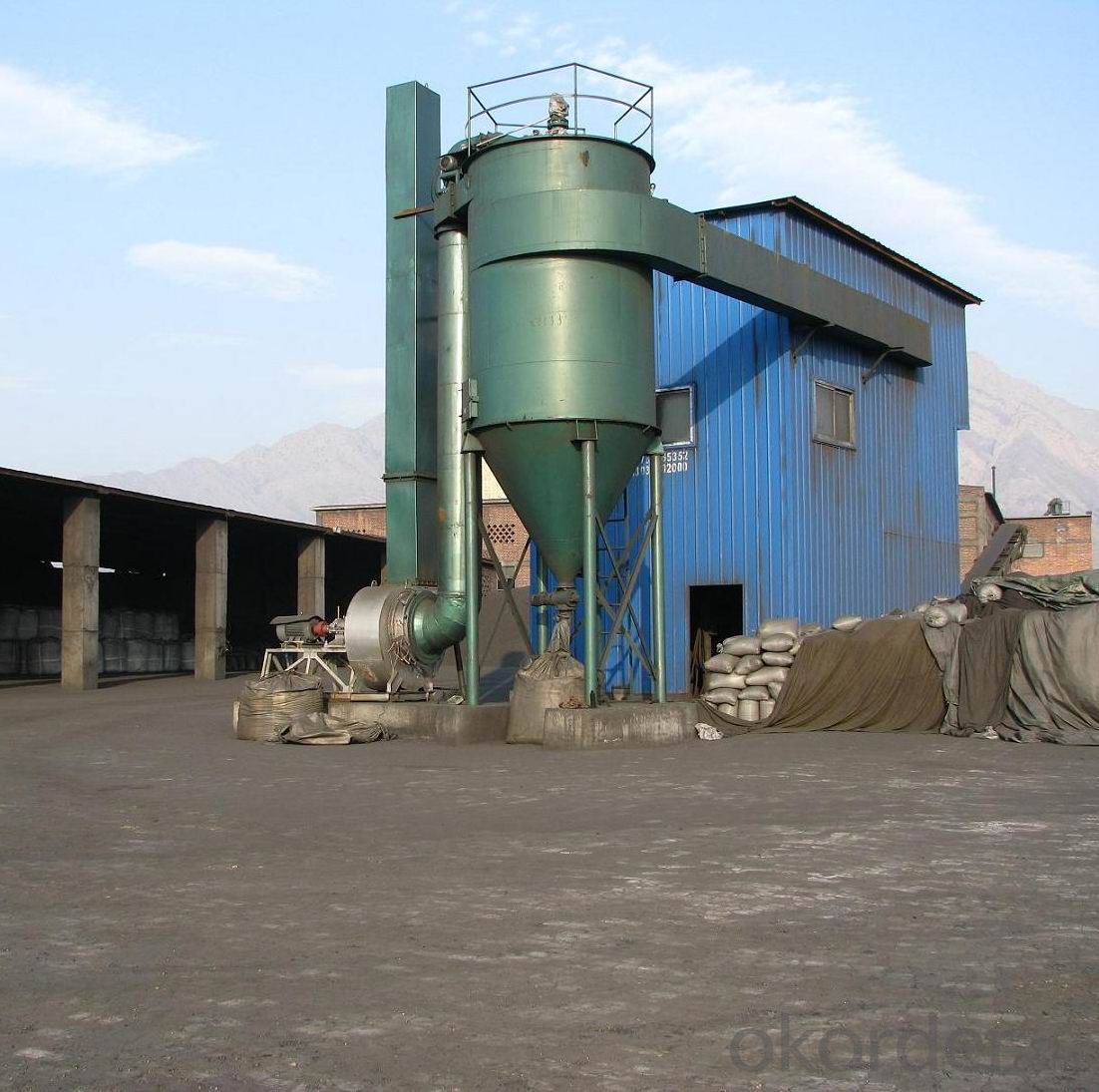
- Q:What are the health effects of carbon pollution?
- The health effects of carbon pollution include an increased risk of respiratory problems such as asthma and chronic obstructive pulmonary disease (COPD), cardiovascular diseases, and even premature death. Carbon pollution can also worsen existing health conditions, particularly in vulnerable populations such as children, the elderly, and those with pre-existing respiratory or cardiovascular conditions. Additionally, carbon pollution contributes to climate change, leading to more frequent and intense heatwaves, extreme weather events, and the spread of infectious diseases, further impacting human health.
- Q:What is carbon fixation?
- Carbon fixation is the process by which carbon dioxide from the atmosphere is converted into organic compounds, primarily through photosynthesis in plants.
- Q:How does carbon affect water quality?
- Water quality can be affected both positively and negatively by carbon. On the positive side, carbon is a natural component of the carbon cycle and has a vital role in maintaining the equilibrium of aquatic ecosystems. It serves as a nutrient for aquatic plants, aiding their growth and providing nourishment and shelter for other organisms in the food chain. However, an excess of carbon in water can have adverse effects on water quality. One way this occurs is through the rise of dissolved organic carbon (DOC). Elevated levels of DOC can result from the decomposition of organic matter, such as deceased plants and animals, as well as the leaching of organic compounds from soil. These organic compounds can harm water quality by diminishing the amount of dissolved oxygen accessible to aquatic organisms, leading to asphyxiation of fish and other aquatic life. Moreover, high levels of carbon can contribute to eutrophication. Eutrophication takes place when there is an overflow of nutrients, including carbon, in water bodies, causing an excessive growth of algae and other aquatic plants. This excessive growth can deplete oxygen levels in the water as the plants decompose, causing harm to fish and other organisms that rely on oxygen for survival. Additionally, carbon can interact with other pollutants present in water, like heavy metals and pesticides, which can become more toxic and readily available when combined with carbon. This can have detrimental effects on aquatic organisms and disrupt the overall balance of the ecosystem. In conclusion, while carbon is vital for the functioning of aquatic ecosystems, excessive amounts can negatively impact water quality by reducing oxygen levels, promoting eutrophication, and increasing the toxicity of other pollutants. Therefore, it is crucial to monitor and manage carbon levels in water bodies to ensure the maintenance of a healthy and balanced aquatic ecosystem.
- Q:What are carbon credits?
- The aim of carbon credits is to lessen greenhouse gas emissions and combat climate change by using a market-based mechanism. These credits measure and quantify the reduction, removal, or avoidance of one metric ton of carbon dioxide (or its equivalent) from being released into the atmosphere. The concept behind carbon credits is rooted in the belief that certain activities or projects can offset the emissions caused by other activities. For example, renewable energy projects like wind farms or solar power plants can generate carbon credits by replacing the need for fossil fuel-based electricity generation. Similarly, projects focused on reforestation or afforestation can absorb carbon dioxide from the atmosphere and generate credits. These carbon credits can be purchased and sold in the carbon market, enabling companies or individuals to compensate for their own emissions by buying credits from projects that have successfully reduced or removed carbon dioxide from the atmosphere. This supports environmentally friendly initiatives and contributes to the overall reduction of greenhouse gases. The carbon credit system functions by creating financial incentives for activities that reduce emissions. It encourages businesses to invest in cleaner technologies and practices by assigning a monetary value to the reduction of carbon emissions. This drives the transition to a low-carbon economy and promotes sustainable development. Carbon credits play a crucial role in international efforts to tackle climate change. They are often used as a compliance mechanism for countries or companies to meet their emission reduction targets, as outlined in international agreements like the Kyoto Protocol or the Paris Agreement. Additionally, they contribute to the overall objective of limiting global temperature rise by encouraging emission reductions beyond regulatory requirements. While carbon credits have faced criticism for potentially allowing companies to continue polluting by simply purchasing credits, they remain an important tool in the fight against climate change. They provide economic benefits to sustainable projects and encourage the adoption of cleaner technologies, ultimately helping to mitigate the environmental impact of human activities.
- Q:What does "2T-250,1U-200@300" and "1Y-100" mean in carbon fiber cloth reinforcement?
- Upstairs to a very comprehensive, I made of carbon fiber cloth
- Q:How is carbon dating used to determine the age of fossils?
- Carbon dating is a scientific method used to determine the age of fossils and other organic materials. It relies on the fact that carbon-14, an isotope of carbon, is present in the atmosphere and taken up by living organisms while they are alive. Once an organism dies, it no longer takes in carbon-14 and the amount of this isotope begins to decrease over time as it undergoes radioactive decay. To determine the age of a fossil using carbon dating, scientists first extract a small sample of the fossil. This sample is then treated with chemicals to remove any contaminants and extract the carbon from the organic material. The extracted carbon is then converted into carbon dioxide gas, which is used to create graphite targets for measuring the levels of carbon-14. Scientists use a technique called Accelerator Mass Spectrometry (AMS) to count the number of carbon-14 and carbon-12 atoms in the sample. The ratio of carbon-14 to carbon-12 is then used to calculate the age of the fossil, based on the known half-life of carbon-14, which is approximately 5730 years. By comparing the amount of carbon-14 remaining in the fossil to the amount of carbon-14 in the atmosphere at the time the organism died, scientists can determine the approximate age of the fossil. This method is particularly useful for dating organic materials up to about 50,000 years old. For older fossils, other methods such as potassium-argon dating or uranium-lead dating are typically used.
- Q:Benefits of reducing carbon emissions
- The researchers then extracted 4 ice ages from 500 to 140 thousand years from Greenland, which resulted in the discovery of TOMV virus in the ice. Researchers say the surface of the virus is surrounded by solid proteins, so it can survive in adversity.The new findings that researchers believe that a series of influenza, polio and smallpox epidemic virus may be hidden in the depths of the ice, the human of the original virus had no ability to resist, when global temperatures rise to ice melting, the ice buried virus in the thousand or more may be raised, forming the epidemic. The scientists said, although they do not know the survival of the virus of hope, or the opportunity to re adapt to the ground environment, but the possibility certainly can not deny the virus back.
- Q:How does carbon affect the acidity of oceans?
- The acidity of oceans is greatly influenced by carbon dioxide (CO2). Human activities like burning fossil fuels and deforestation release CO2 into the atmosphere, a significant portion of which is absorbed by the oceans. This absorption, known as ocean acidification, causes an increase in hydrogen ions in the water, leading to lower pH levels and higher acidity. When CO2 dissolves in seawater, it combines with water molecules to create carbonic acid (H2CO3). This chemical reaction releases hydrogen ions (H+), which elevate the water's acidity. The increased acidity disrupts the delicate chemical balance necessary for life in the ocean, especially reactions involving calcium carbonate. Calcium carbonate plays a vital role in the formation of shells and skeletons for various marine organisms, such as corals, shellfish, and certain plankton. As ocean acidity rises, it becomes more challenging for these creatures to construct and maintain their calcium carbonate structures. This can result in stunted growth, weakened shells, and heightened susceptibility to predators and diseases. Ocean acidification also has implications for the entire marine food chain. Many species depend on shell-forming organisms as a food source or as habitats, and their decline can have a ripple effect on the entire ecosystem. Additionally, acidification can disrupt the balance of phytoplankton, which are microscopic plants crucial for marine food chains. Furthermore, carbon dioxide in the ocean can interact with water to generate bicarbonate ions (HCO3-) and carbonate ions (CO32-). These ions are crucial for maintaining proper pH levels and enabling marine organisms to regulate their internal chemistry. However, as CO2 levels increase, the concentration of carbonate ions decreases, making it more challenging for organisms to obtain the carbonate they need to build their shells and skeletons. Overall, the impact of carbon on ocean acidity is significant and has far-reaching consequences for marine life. It is essential to reduce carbon emissions and implement measures to mitigate and adapt to the effects of ocean acidification in order to safeguard the health and biodiversity of our oceans.
- Q:What are the consequences of increased carbon emissions on economic stability?
- Increased carbon emissions have significant consequences on economic stability. One of the most notable impacts is the exacerbation of climate change, leading to more frequent and severe natural disasters such as hurricanes, floods, and wildfires. These events result in immense economic damage, including the destruction of infrastructure, loss of property, and disruption of supply chains. Furthermore, the effects of climate change, driven by increased carbon emissions, also have long-term economic implications. Rising sea levels threaten coastal cities and industries, leading to the potential displacement of populations and loss of valuable assets. Extreme heatwaves and droughts can damage agricultural productivity, affecting food security and increasing prices. These climate-related disruptions can destabilize economies, particularly in vulnerable regions heavily reliant on agriculture or tourism. Additionally, efforts to mitigate and adapt to climate change, such as transitioning to cleaner energy sources and implementing climate policies, require significant financial investments. This can strain government budgets and divert resources away from other socio-economic priorities, potentially leading to reduced funding for education, healthcare, and infrastructure development. Moreover, the economic consequences of increased carbon emissions extend beyond immediate climate-related impacts. The reliance on fossil fuels as the primary source of energy contributes to volatile oil prices, which can disrupt global markets and impact economic stability. As the world moves towards a low-carbon economy, industries heavily dependent on fossil fuels may face significant challenges, leading to job losses and economic dislocation. In summary, increased carbon emissions have far-reaching consequences on economic stability. The resulting climate change leads to more frequent and severe natural disasters, causing substantial economic damage. Furthermore, the need to respond to climate change through mitigation and adaptation efforts can strain government budgets and divert resources away from other essential sectors. Lastly, the reliance on fossil fuels contributes to volatile oil prices and poses long-term risks to industries tied to these resources. Addressing carbon emissions is crucial for safeguarding economic stability and promoting sustainable growth.
- Q:What is the carbon footprint of different activities?
- The carbon footprint of different activities refers to the amount of greenhouse gas emissions, particularly carbon dioxide, that are produced as a result of those activities. It varies depending on the type and scale of the activity. Activities such as driving a car, flying, using electricity, and consuming meat and dairy products typically have higher carbon footprints compared to activities such as walking, cycling, using renewable energy, and eating plant-based foods. The carbon footprint of an activity is an important measure to assess its environmental impact and to make informed choices towards reducing our carbon emissions.
1. Manufacturer Overview |
|
|---|---|
| Location | |
| Year Established | |
| Annual Output Value | |
| Main Markets | |
| Company Certifications | |
2. Manufacturer Certificates |
|
|---|---|
| a) Certification Name | |
| Range | |
| Reference | |
| Validity Period | |
3. Manufacturer Capability |
|
|---|---|
| a)Trade Capacity | |
| Nearest Port | |
| Export Percentage | |
| No.of Employees in Trade Department | |
| Language Spoken: | |
| b)Factory Information | |
| Factory Size: | |
| No. of Production Lines | |
| Contract Manufacturing | |
| Product Price Range | |
Send your message to us
Calcined Anthracite Coal Low Sulphur for Steelmaking
- Loading Port:
- Tianjin
- Payment Terms:
- TT or LC
- Min Order Qty:
- 20 m.t.
- Supply Capability:
- 10000 m.t./month
OKorder Service Pledge
OKorder Financial Service
Similar products
New products
Hot products
Hot Searches
Related keywords
